25 Contact Center Metrics (And Which Ones You Should Ignore)
Discover the top 25 contact center metrics that drive performance, customer satisfaction, and operational success. Learn which metrics truly matter, which ones to approach with caution, and how to use data effectively to elevate your contact center. At Elevating Everyone, we provide tailored support to help organizations turn metrics into actionable insights that boost both Customer Experience (Cx) and Employee Experience (Ex).
Doug Ward
3/4/20253 min read


The Power of Metrics in Your Contact Center
Metrics are the lifeblood of any contact center. They provide valuable insights into operational efficiency, customer satisfaction, and agent performance. However, with so many metrics available, it can be challenging to determine which ones truly matter. While some metrics offer critical insights, others can be misleading or even detrimental if overemphasized. This guide breaks down 25 essential contact center metrics and highlights a few that you might be better off ignoring.
Key Contact Center Metrics That Matter
Customer Satisfaction (CSAT): Measures how satisfied customers are with their interactions. A strong indicator of overall service quality.
Net Promoter Score (NPS): Gauges customer loyalty by asking how likely they are to recommend your service.
First Call Resolution (FCR): Tracks the percentage of issues resolved in a single interaction, boosting efficiency and satisfaction.
Average Handle Time (AHT): Measures the average duration of interactions, helping to balance efficiency with service quality.
Service Level (SL): Monitors the percentage of calls answered within a specified time frame, indicating responsiveness.
Occupancy Rate: Shows the percentage of time agents spend on call-related activities versus idle time.
Abandonment Rate: Reflects how often customers hang up before speaking with an agent, indicating potential service delays.
Average Speed of Answer (ASA): Measures how quickly calls are answered, impacting customer satisfaction.
Adherence to Schedule: Ensures agents are available when expected, maintaining service consistency.
Call Quality Scores: Evaluates interactions for compliance, professionalism, and effectiveness.
Agent Utilization: Analyzes how efficiently agents are being used within the call center.
Cost Per Contact: Calculates the cost of each interaction, helping manage operational expenses.
Conversion Rate: Important for sales-focused contact centers, measuring how often calls lead to sales.
Customer Effort Score (CES): Assesses how easy it is for customers to get their issues resolved.
Transfer Rate: Indicates how often calls are passed between agents, often a sign of process inefficiencies.
Self-Service Usage: Measures the effectiveness of automated systems in resolving issues without an agent.
Average Wait Time: A critical metric for customer patience and satisfaction.
Agent Turnover Rate: Helps gauge job satisfaction and stability within your team.
Peak Hour Traffic: Tracks call volumes to optimize staffing and reduce wait times.
Resolution Rate: Shows how effectively customer issues are being solved.
Upsell/Cross-sell Rates: Indicates how well agents leverage opportunities to increase sales.
Contact Volume by Channel: Helps allocate resources across phone, email, chat, and social media.
Time to Resolution: Tracks the total time taken to resolve customer issues.
Hold Time: Measures how long customers wait while on hold, directly affecting satisfaction.
Shrinkage Rate: Considers time lost to breaks, training, and other non-call activities.
Metrics to Approach with Caution
Average Handle Time (AHT): Focusing too much on this metric can lead to rushed interactions and reduced quality.
High Call Volume as a Success Metric: It might indicate problems with products or services rather than success.
Overemphasis on Occupancy Rate: A high occupancy rate can contribute to agent burnout and lower quality service.
Schedule Adherence Alone: Without considering the quality of interactions, adherence is just a number.
Service Level Without Context: It may not reflect the quality of service if other metrics, like satisfaction scores, are low.
How to Use Metrics Effectively
Prioritize Balanced Metrics: Avoid focusing on a single metric. Use a mix of efficiency and quality measures.
Align Metrics with Business Goals: Ensure your metrics support your organization's broader objectives.
Engage Your Team: Share metrics with agents and use them as a coaching tool, not a punitive measure.
Regularly Review and Adapt: Metrics should evolve as business needs and customer expectations change.
Conclusion: Need Help Navigating Contact Center Metrics?
Choosing and using the right metrics effectively can transform your contact center's performance. Elevating Everyone specializes in helping organizations identify, analyze, and leverage the most impactful metrics to drive operational success and enhance customer and employee experiences. Contact us today to learn how our tailored consulting and workshops can support your organization's unique needs.
Let's turn data into actionable insights and elevate your contact center together!
Elevating Everyone
Stay in Touch!
doug.ward@elevatingeveryone.com
843-259-2055
© 2025. All rights reserved.
Elevate Everywhere Enterprises, LLC.


